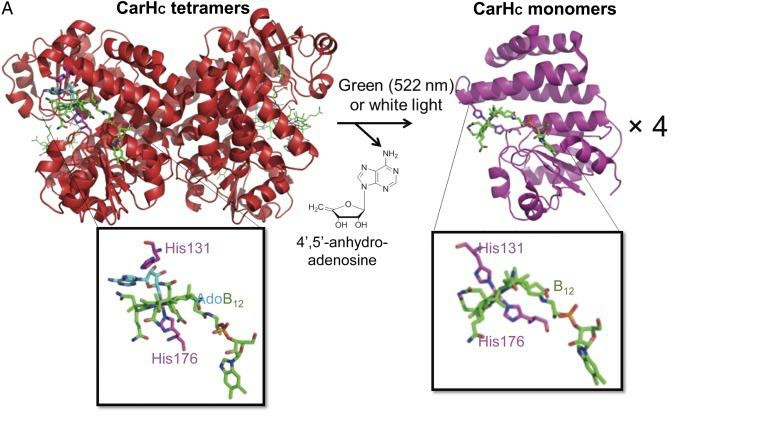Photosensitive Peptide & Protein Hydrogel Development
InquiryCD Formulation offers comprehensive development services for photosensitive hydrogels directly derived from or loaded with peptides and proteins. We utilize the latest techniques in computational design, recombinant production, and materials characterization to create these innovative biomaterials. Clients are provided with full-service support from formulation design to market.
What are Photosensitive Hydrogels?
Upon exposure to light, photosensitive hydrogels undergo a photochemical reaction, resulting in the formation of a three-dimensional gel-like structure. These hydrogels can be composed of polymers that contain photosensitive agents, such as photo initiators or photoreactive dyes, which initiate the gelation process. In drug delivery, tissue engineering, biosensing and other fields of biomedical technology, photosensitive hydrogels are found. They offer versatility and tunability for a wide array of applications.
 Response mechanism of protein-based photosensitive hydrogels (Wang R.; et al. 2017)
Response mechanism of protein-based photosensitive hydrogels (Wang R.; et al. 2017)
What Can We Do for Photosensitive Peptide & Protein Hydrogel Development?
- Development of Photosensitive Hydrogels Loaded with Peptide & Protein
CD Formulation specializes in tailoring photosensitive hydrogels that encapsulate peptide and protein therapeutics. By incorporating customized sequences and optimizing photopolymerization processes, our researchers are able to fabricate biocompatible hydrogel systems offering the controlled release and non-invasive formation capabilities necessary for advanced regenerative therapies.
- Development of Photosensitive Hydrogels Based on Peptides & Protein
CD Formulation is at the forefront of developing novel photopolymerizable biomaterials composed directly of peptides and proteins. Utilizing our pioneering work in computational biomolecular design and synthetic bioengineering, our experts devise self-assembling protein sequences optimally structured for incorporation of photocrosslinkers and cell-instructive signals. Biodegradable hydrogels can be developed for a variety of applications, including drug delivery and tissue regeneration, as a result.
How Do We Develop Photosensitive Hydrogels for Peptide & Protein Delivery?
- Choose monomers/macromers that are compatible with encapsulated proteins and maintain bioactivity.
- Ensure proteins are adequately protected during free radical polymerization via excipients, low light exposure, and rapid reaction kinetics.
- Determine optimal monomer:crosslinker:protein ratios for desired mechanical properties and loading efficiency.
- Homogenously disperse proteins in monomer pre-solution using mild mixing to avoid denaturation.
- Maintain physiological pH and ionic conditions throughout formulation.
- Incorporate proteins after degassing pre-solution to remove oxygen which inhibits polymerization.
- Photopolymerize thin hydrogel films or mold pre-solution into desired shapes using customized photomasks or molds.
- Characterize protein stability, structure, release kinetics and therapeutic efficacy in vitro and in vivo.
- Consider secondary modifications like heparin or protease binding domains to prolong release.
Materials We Use in Photosensitive Hydrogel Development
Photosensitive hydrogels typically consist of a polymer matrix that absorbs light energy and undergoes photochemical reactions. Polyethylene glycol (PEG), polyvinyl alcohol (PVA) and polyacrylamide (PAAM) are commonly used polymer materials.
Photosensitizers, such as photoinitiators or photoreactive dyes, undergo chemical changes when exposed to specific wavelengths of light. When developing photosensitive hydrogels, we often use photoinitiators such as benzoin methyl ether (BME) or camphorquinone (CQ) to initiate cross-linking reactions.
Highlights of Our Photosensitive Peptide & Protein Hydrogel Development Services
- Photosensitive hydrogels enable precise spatiotemporal control of peptide and protein delivery, enabling on-demand release and local drug delivery.
- Photosensitive hydrogels can encapsulate multiple drugs and respond to specific biological stimuli, providing opportunities for combination and personalized treatments.
- We can formulate photosensitive hydrogels into injectable systems or tissue engineering scaffolds to facilitate minimally invasive delivery and support tissue regeneration.
CD Formulation offers full-service support for customizing peptides and protein hydrogels. Our development program handles all steps from molecular selection to commercialization. If you're looking to enhance your research or product development with cutting-edge photosensitive hydrogels, contact us today for a quotation!
References
- Wang R.; et al. B12-dependent photoresponsive protein hydrogels for controlled stem cell/protein release. Proc Natl Acad Sci U S A. 2017, 114(23):5912-5917.
- Katyal P.; et al. Recent trends in peptide and protein-based hydrogels. Curr Opin Struct Biol. 2020, 63:97-105.
Related Services


 Response mechanism of protein-based photosensitive hydrogels (Wang R.; et al. 2017)
Response mechanism of protein-based photosensitive hydrogels (Wang R.; et al. 2017)